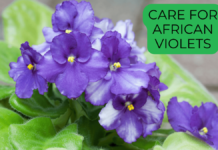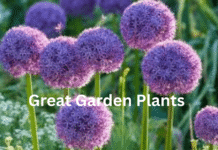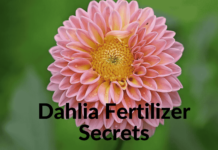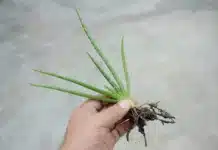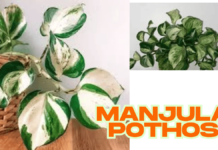The prayer plant (Maranta leuconeura) is a captivating species from the family Marantaceae, renowned for its striking foliage and remarkable ability to fold its leaves upwards at night, mimicking hands in prayer. In this comprehensive guide, we will explore the essential aspects of prayer plant care, including watering, lighting, humidity, soil, temperature, fertilization, pruning, propagation, and pest management.This unique characteristic is called nyctinasty, a form of circadian rhythm that allows the plant to protect itself from excess moisture and light during nighttime. The leaves themselves are a work of art, with intricate patterns that often display various shades of green, red, and purple depending on the variety.
However, this beauty comes with specific care requirements. By understanding the plant’s natural habitat and replicating it as closely as possible in your home, you can enjoy a healthy, thriving prayer plant.
Lighting: How to Get It Right

Prayer plants are adapted to grow under the canopy of taller trees in the wild, meaning they naturally experience dappled sunlight. In your home, it’s crucial to mimic this environment by placing your plant in a spot that gets bright, indirect light. Direct sunlight can scorch the delicate leaves, causing them to develop brown spots or edges.
The best location for your prayer plant is near a north or east-facing window, where it will get soft morning sunlight. If you’re unsure, you can always test the light levels by holding your hand above the plant—if the shadow is clear and defined, the light is too strong, and you may need to move the plant further away.
Alternatively, if your home doesn’t have ample natural light, you can use a grow light to provide the necessary intensity without the risk of burning the leaves. Ensure the light is positioned a few feet above the plant to prevent damage.
Watering: The Key to Health

Watering is one of the most critical aspects of prayer plant care, and getting it right is essential for the overall health of your plant. Prayer plants require consistent moisture but should never sit in water logged soil, as this can lead to root rot.
- Frequency of Watering: Water the plant when the top 1-2 inches of soil feel dry. During warmer months, your prayer plant may need more frequent watering, perhaps once a week. In the colder months, it may need less frequent watering as the plant’s growth slows down.
- Watering Technique: Always water evenly around the base of the plant, ensuring that the entire root system receives moisture. Ensure the pot has drainage holes, and allow any excess water to drain out. Never let your prayer plant sit in standing water.
- Water Quality: Tap water, especially hard water that contains high levels of minerals like fluoride and chlorine, can harm the plant over time. Distilled water or rainwater is the best choice for watering. If you must use tap water, let it sit out overnight to allow the chemicals to dissipate.
- Signs of Overwatering or Underwatering: Overwatering leads to yellowing leaves and mushy stems, while underwatering will cause the leaves to wilt, curl, and become crispy, particularly at the edges.
Humidity: A Crucial Element

Prayer plants are native to the humid environments of Brazil’s tropical forests, where the humidity levels can reach 60% or higher. To replicate these conditions indoors, it’s essential to keep the air around your plant moist.
- Ideal Humidity: Prayer plants prefer a humidity level between 50% to 60%. Anything below 40% can lead to brown tips on the leaves and general poor health.
- How to Increase Humidity: If your indoor air is dry, especially during the winter months when heating systems dry out the air, consider using a humidifier to boost moisture levels. Another simple trick is to place a pebble tray beneath the plant’s pot. Fill the tray with water and small stones, ensuring the pot itself does not sit in the water. As the water evaporates, it will increase the humidity around the plant.
- Misting: While misting can provide temporary relief, it’s not a long-term solution. Misting your prayer plant a few times a week can help, but it should be done early in the day to avoid fungal issues.
Soil: Perfecting the Base
The soil you use for your prayer plant is crucial for proper root development and moisture retention. You’ll want a soil mix that is well-draining yet retains enough moisture to keep the roots hydrated without becoming waterlogged.
- Ideal Soil Type: A light, well-draining mix is key. The best mixture for a prayer plant includes:
- Two parts sphagnum peat moss
- One part perlite or vermiculite
- One part well-draining potting soil or coconut coir
This blend allows for proper aeration around the roots, preventing the dreaded root rot while providing enough moisture retention for the plant’s growth.
- Repotting: Prayer plants do not require frequent repotting. However, every 1 to 2 years, when the plant becomes root-bound or the soil begins to deplete in nutrients, it’s time to move the plant to a slightly larger pot. When repotting, gently loosen the roots and avoid disturbing them too much to minimize stress.
Temperature: Ideal Conditions for Growth
Prayer plants prefer warm environments, so you should aim to keep them in a room with temperatures between 65°F and 80°F (18°C to 27°C). They are sensitive to temperature fluctuations and drafts, which can cause leaf curling and stress.
- Avoid Cold Drafts: Keep your prayer plant away from air conditioners, heating vents, or windows that open frequently, as these temperature fluctuations can harm the plant.
- Seasonal Adjustments: In colder months, the plant’s growth may slow down due to lower light levels and cooler temperatures, so reduce the watering frequency accordingly.
Fertilizing: Boosting Growth
Prayer plants grow actively in the spring and summer months, and during this time, they benefit from regular fertilization. Fertilization encourages healthy, vibrant foliage.
- Type of Fertilizer: Use a balanced, water-soluble fertilizer with equal proportions of nitrogen (N), phosphorus (P), and potassium (K) to support the plant’s overall health.
- Application Frequency: During the growing season (spring through summer), fertilize your prayer plant once every 2 weeks. In the fall and winter, reduce fertilization to once a month, as the plant’s growth slows significantly.
- Signs of Over-fertilization: Over-fertilizing can cause the leaves to become scorched or have burnt edges. If you notice this, reduce the frequency of fertilizing and flush the soil with clean water to remove excess nutrients.
Pest and Disease Management
While prayer plants are relatively pest-resistant, they can occasionally attract spider mites, mealybugs, and aphids. Regularly inspect the undersides of leaves for signs of pests.
- Dealing with Pests: Treat infestations promptly with neem oil or insecticidal soap. For mild infestations, wiping the leaves with a damp cloth can help remove pests.
- Diseases: Root rot is a major concern for prayer plants, especially when the plant is overwatered or the soil does not drain well. To prevent root rot, always ensure proper drainage, and avoid allowing water to stagnate at the bottom of the pot.
Pros and Cons of Growing Prayer Plants
| Pros | Cons |
|---|---|
| Attractive Foliage: Prayer plants are known for their striking, patterned leaves that add an elegant and exotic touch to any space. | Humidity Sensitivity: Prayer plants require high humidity levels to thrive, which can be challenging to maintain, especially in dry climates or during winter. |
| Non-Toxic: These plants are safe for pets and humans, making them an excellent choice for households with animals or small children. | Sensitive to Overwatering: Prayer plants are highly susceptible to root rot if they are overwatered, requiring careful monitoring of watering habits. |
| Unique Leaf Movement: The leaves fold up at night, resembling hands in prayer, adding an intriguing, dynamic aspect to their care and appearance. | Requires Frequent Attention: Due to their specific care needs (water, light, humidity), prayer plants can require more attention than other houseplants. |
| Low Light Tolerance: Prayer plants can grow well in medium to low-light environments, making them versatile for various indoor settings. | Pest-Prone: While generally resistant, prayer plants can attract common pests like spider mites, mealybugs, and aphids, which can be a hassle to manage. |
| Aesthetic Appeal: With their colorful and patterned foliage, prayer plants enhance the décor of any room, becoming a statement piece. | Slow Growth: These plants can grow slowly, particularly in low light conditions or when not given optimal care, which can be frustrating for some plant enthusiasts. |
| Air Purification: Like many indoor plants, prayer plants help purify the air, improving the overall environment in your home. | Prone to Leaf Damage: Prayer plants are sensitive to extreme temperature fluctuations and drafts, which can cause their leaves to curl or discolor. |
Conclusion: A Beautiful Journey of Care
Caring for a prayer plant may seem like a lot of effort, but it’s a highly rewarding experience. By paying attention to its needs for indirect light, consistent watering, high humidity, and well-draining soil, your prayer plant can flourish and add beauty to your home for years to come. Remember, each plant is unique, so observe your plant’s individual needs and adjust care routines accordingly.



